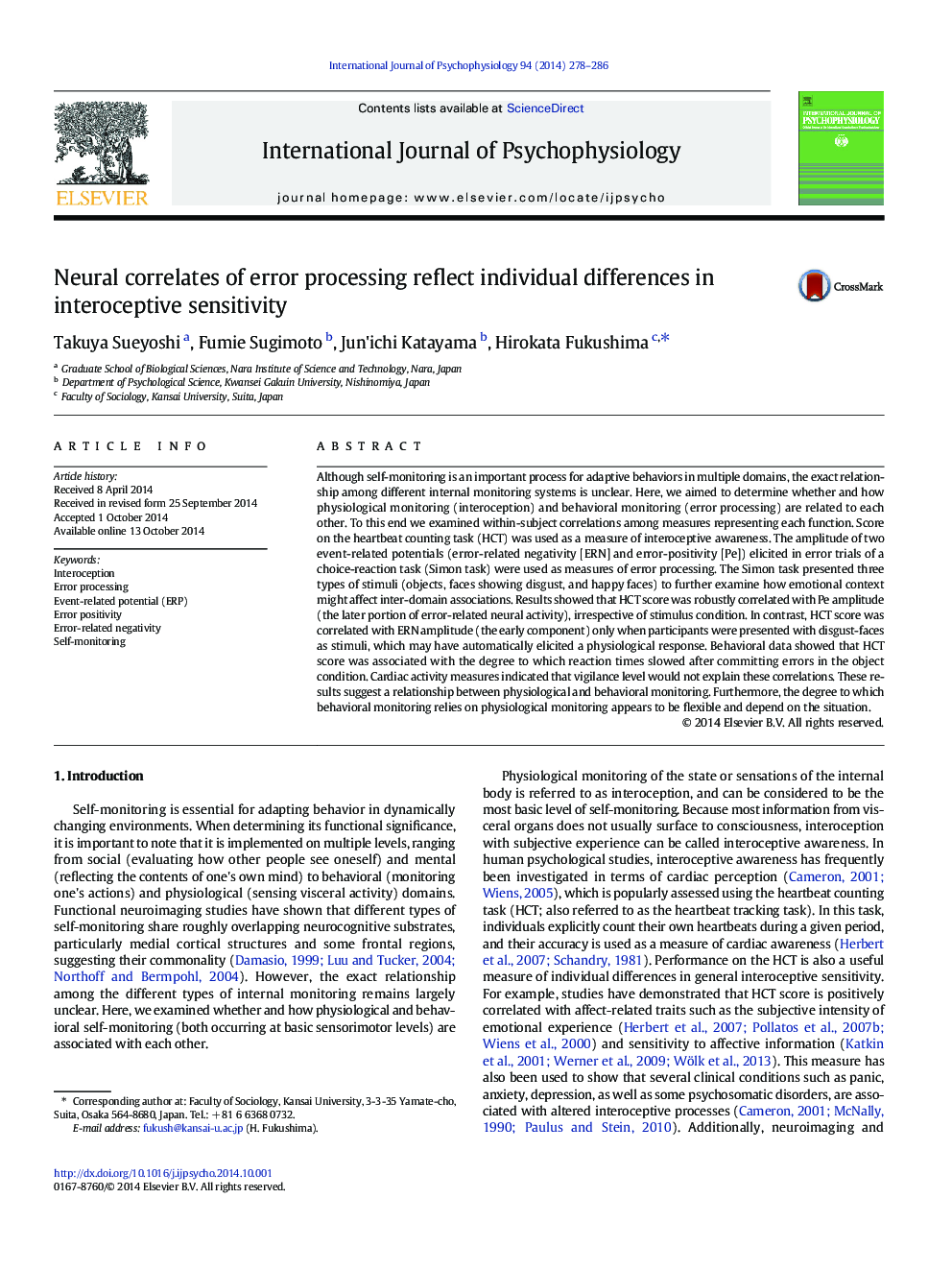| کد مقاله | کد نشریه | سال انتشار | مقاله انگلیسی | نسخه تمام متن |
|---|---|---|---|---|
| 930163 | 1474412 | 2014 | 9 صفحه PDF | دانلود رایگان |
• Cardiac sensitivity was robustly correlated with the amplitude of error-related ERPs.
• Physiological monitoring and behavioral monitoring are associated with each other.
• This relation was magnified when disgust stimuli were presented to participants.
• The degree of the inter-domain relation may be flexible.
Although self-monitoring is an important process for adaptive behaviors in multiple domains, the exact relationship among different internal monitoring systems is unclear. Here, we aimed to determine whether and how physiological monitoring (interoception) and behavioral monitoring (error processing) are related to each other. To this end we examined within-subject correlations among measures representing each function. Score on the heartbeat counting task (HCT) was used as a measure of interoceptive awareness. The amplitude of two event-related potentials (error-related negativity [ERN] and error-positivity [Pe]) elicited in error trials of a choice-reaction task (Simon task) were used as measures of error processing. The Simon task presented three types of stimuli (objects, faces showing disgust, and happy faces) to further examine how emotional context might affect inter-domain associations. Results showed that HCT score was robustly correlated with Pe amplitude (the later portion of error-related neural activity), irrespective of stimulus condition. In contrast, HCT score was correlated with ERN amplitude (the early component) only when participants were presented with disgust-faces as stimuli, which may have automatically elicited a physiological response. Behavioral data showed that HCT score was associated with the degree to which reaction times slowed after committing errors in the object condition. Cardiac activity measures indicated that vigilance level would not explain these correlations. These results suggest a relationship between physiological and behavioral monitoring. Furthermore, the degree to which behavioral monitoring relies on physiological monitoring appears to be flexible and depend on the situation.
Journal: International Journal of Psychophysiology - Volume 94, Issue 3, December 2014, Pages 278–286
